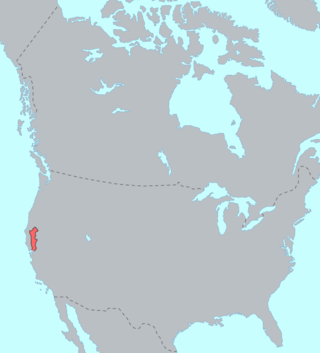
The Wintu are Native Americans who live in what is now Northern California. They are part of a loose association of peoples known collectively as the Wintun. There are four major groups that make up the Wintu people. There northern Wintun (Wintu) and the Central Wintun (Namlaki) are most common. Others are the Nomlaki and the Patwin. The Wintu language is part of the Penutian language family but there are different dialects. Before the European colonization, different Wintun communities interacted with each other but were more inclined to communicate with others tribes to the east and west.

The Wintun are members of several related Native American peoples of Northern California, including the Wintu (northern), Nomlaki (central), and Patwin (southern). Their range is from approximately present-day Lake Shasta to San Francisco Bay, along the western side of the Sacramento River to the Coast Range. Each of these tribes speak one of the Wintuan languages. Linguistic and archaeological evidence suggests that the Wintun people probably entered the California area around 500 AD from what is now southern Oregon, introducing bow and arrow technology to the region.

Wintuan is a family of languages spoken in the Sacramento Valley of central Northern California.
The Nomlaki are a Wintun people native to the area of the Sacramento Valley, extending westward to the Coast Range in Northern California. Today some Nomlaki people are enrolled in the federally recognized tribes: Round Valley Indian Tribes, Grindstone Indian Rancheria or the Paskenta Band of Nomlaki Indians. The Nomlaki were bordered by the Wintu (Wintun) in the north, the Yana in the northeast and east, the Konkow (Maiduan) in the east, the Patwin (Wintun) in the south, and the Yuki in the west.

The Patwin are a band of Wintun people in Northern California. The Patwin comprise the southern branch of the Wintun group, native inhabitants of California since approximately 500.

The Redding Rancheria is a federally recognized tribe with a reservation in Shasta County, Northern California. The 31-acre site (13 ha) of the Redding Rancheria was purchased in 1922 by the Bureau of Indian Affairs in order to provide Indigenous peoples with a place to camp and live. They had been made landless by European-American settlers in the area. Three groups of Native Americans in the area organized as a tribe and were recognized in 1979.
The Big Lagoon Rancheria is a federally recognized tribe of Yurok and Tolowa Indians. They are located in Humboldt County, California, and their tribal headquarters is in Arcata, California.
The Big Sandy Rancheria of Mono Indians of California is a ranchería and federally recognized tribe of Western Mono Indians (Monache) located in Fresno County, California, United States. As of the 2010 Census the population was 118. In 1909, the Bureau of Indian Affairs (BIA) bought 280 acres of land for the Big Sandy Band of Western Mono Indians.

The Big Valley Band of Pomo Indians of the Big Valley Rancheria is a federally recognized tribe of Pomo and Pit River Indians, with a reservation located in Lake County, California, near the town of Finley. They conduct tribal business from Lakeport, California.
Colusa Rancheria is an unincorporated community in Colusa County, California. It lies at an elevation of 59 feet. The inhabitants belong to the Wintun tribe. It was established in 1907. As of the 2010 Census the population was 76.

The Kletsel Dehe Wintun Nation of the Cortina Rancheria is a federally recognized tribe of Indigenous people of California. They are Wintun people, who historically spoke Wintuan languages.

The Robinson Rancheria of Pomo Indians of California is a federally recognized tribe of Eastern Pomo people in Lake County, California.
The Table Mountain Rancheria is a federally recognized tribe of Native American people from the Chukchansi band of Yokuts and the Monache tribe. It is also the tribe's ranchería, located in Fresno County, California.
The Susanville Indian Rancheria is a federally recognized ranchería of Native Americans in northeastern California whose people are from the Washoe, Achomawi, Mountain Maidu, Northern Paiute, and Atsugewi tribes.
The Grindstone Indian Rancheria of Wintun-Wailaki Indians is a federally recognized tribe and ranchería of Wintun and Wailaki Indians from northern California. As of the 2010 Census the population was 164.
Cache Creek Casino Resort is a casino/resort located in Brooks, California, in Northern California's Capay Valley. Opened as a bingo hall in July 1985, it was renovated in 2002 and completed in 2004 as a destination resort. The connected hotel contains 659 rooms, including 27 suites. Cache Creek offers 2,300 slot machines, more than 120 table games, a 14 table poker room, day spa, nine restaurants, and an 18-hole championship golf course.
Patwin (Patween) is a critically endangered Wintuan language of Northern California. As of 2021, there was one documented first language speaker of Patwin. As of 2010, Patwin language classes were taught at the Yocha Dehe Wintun Nation tribal school.
The Yocha Dehe Wintun Nation is a federally recognized tribe of Wintun people, specifically Patwin people or southern Wintun, in Yolo County, California. They were formerly known as the Rumsey Indian Rancheria of Wintun Indians of California.

The Paskenta Band of Nomlaki Indians, or in their own language Nomlāqa Bōda, is a federally recognized tribe of Nomlaki people. The Nomlaki are Central Wintun, or River and Hill Nomlaki, an indigenous people of California, located in Tehama and Glenn counties.








